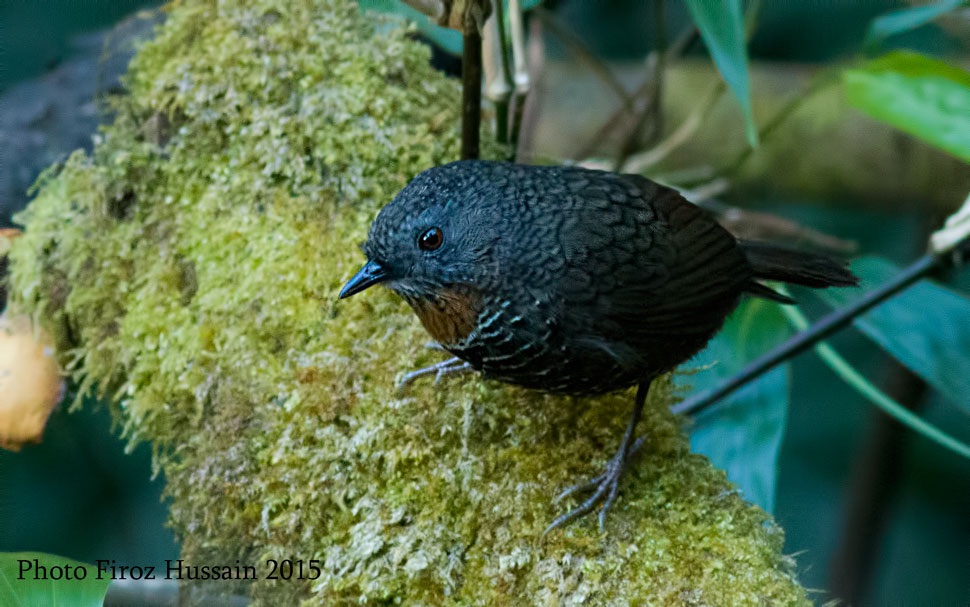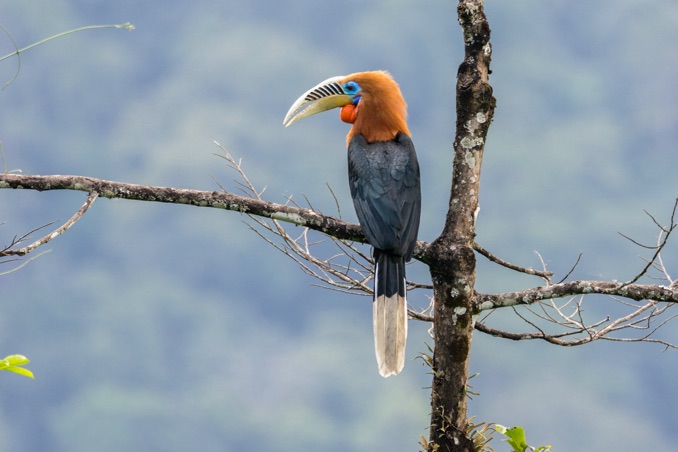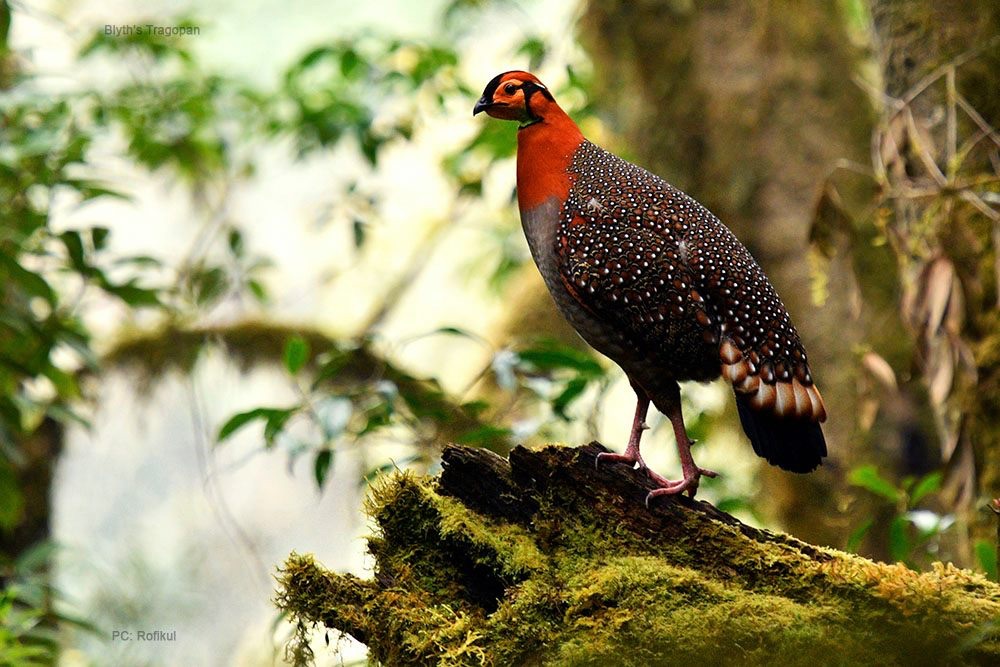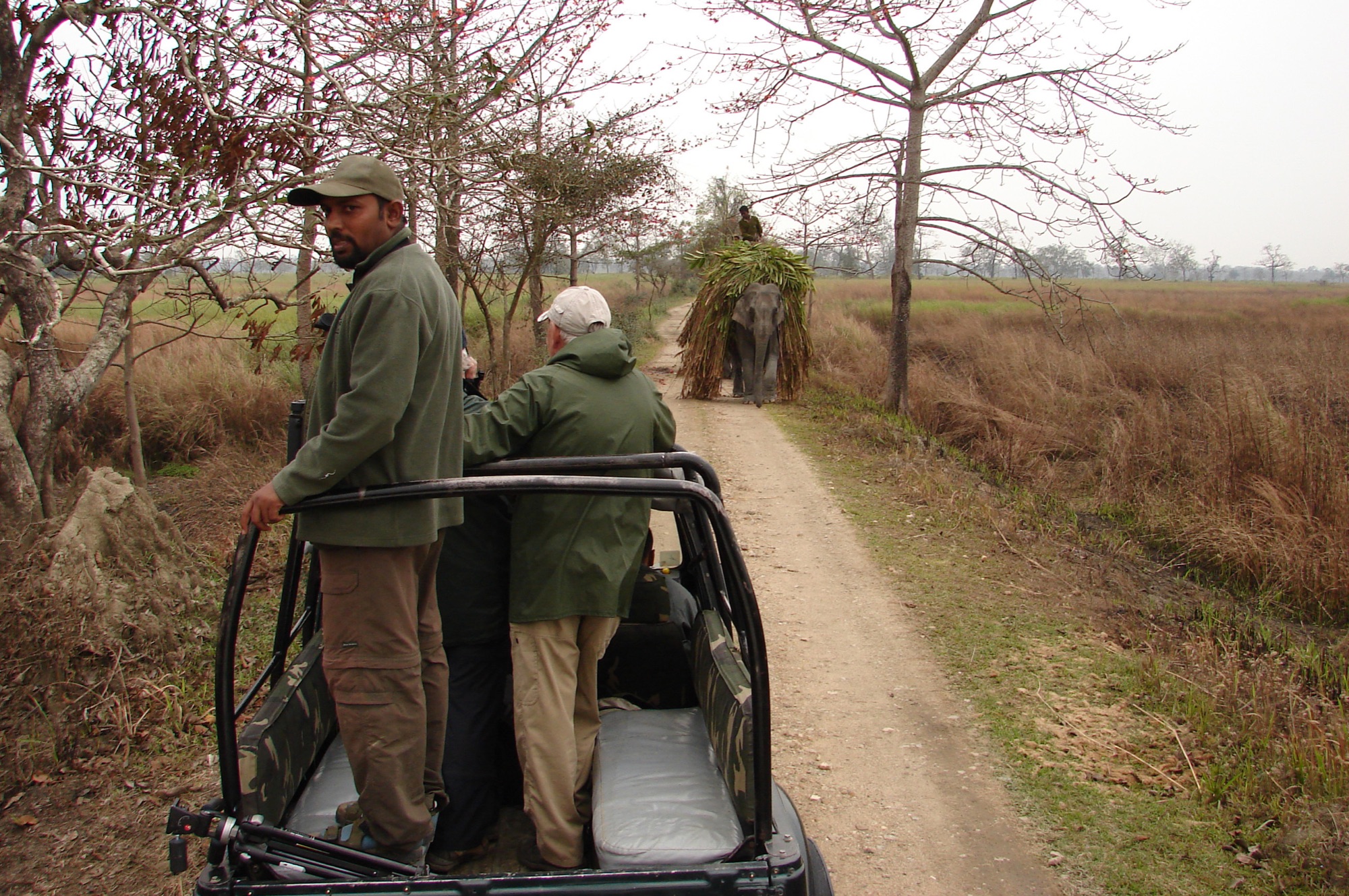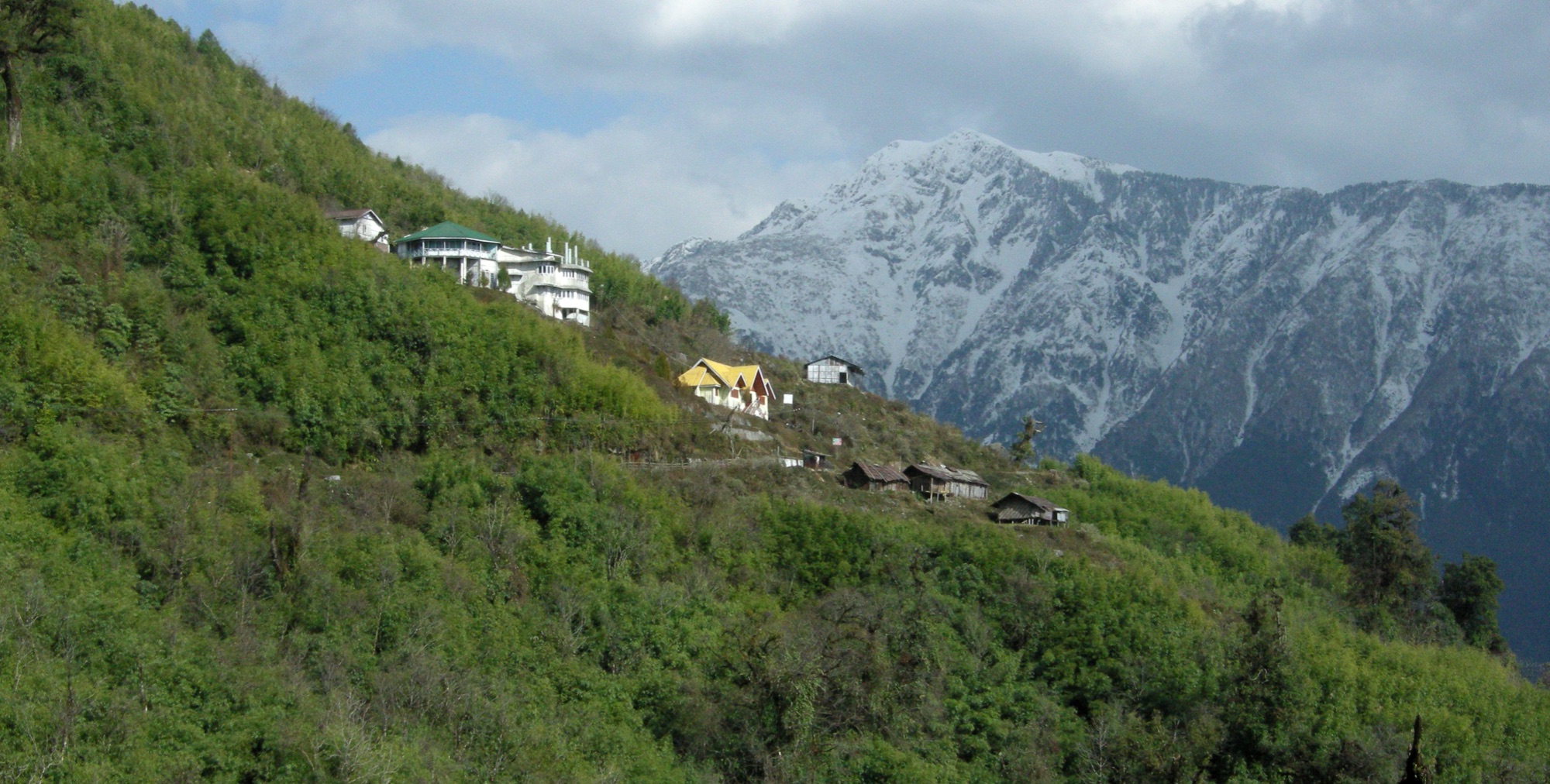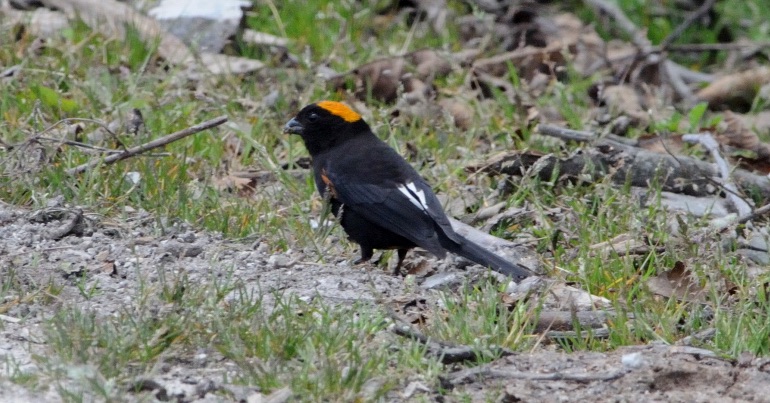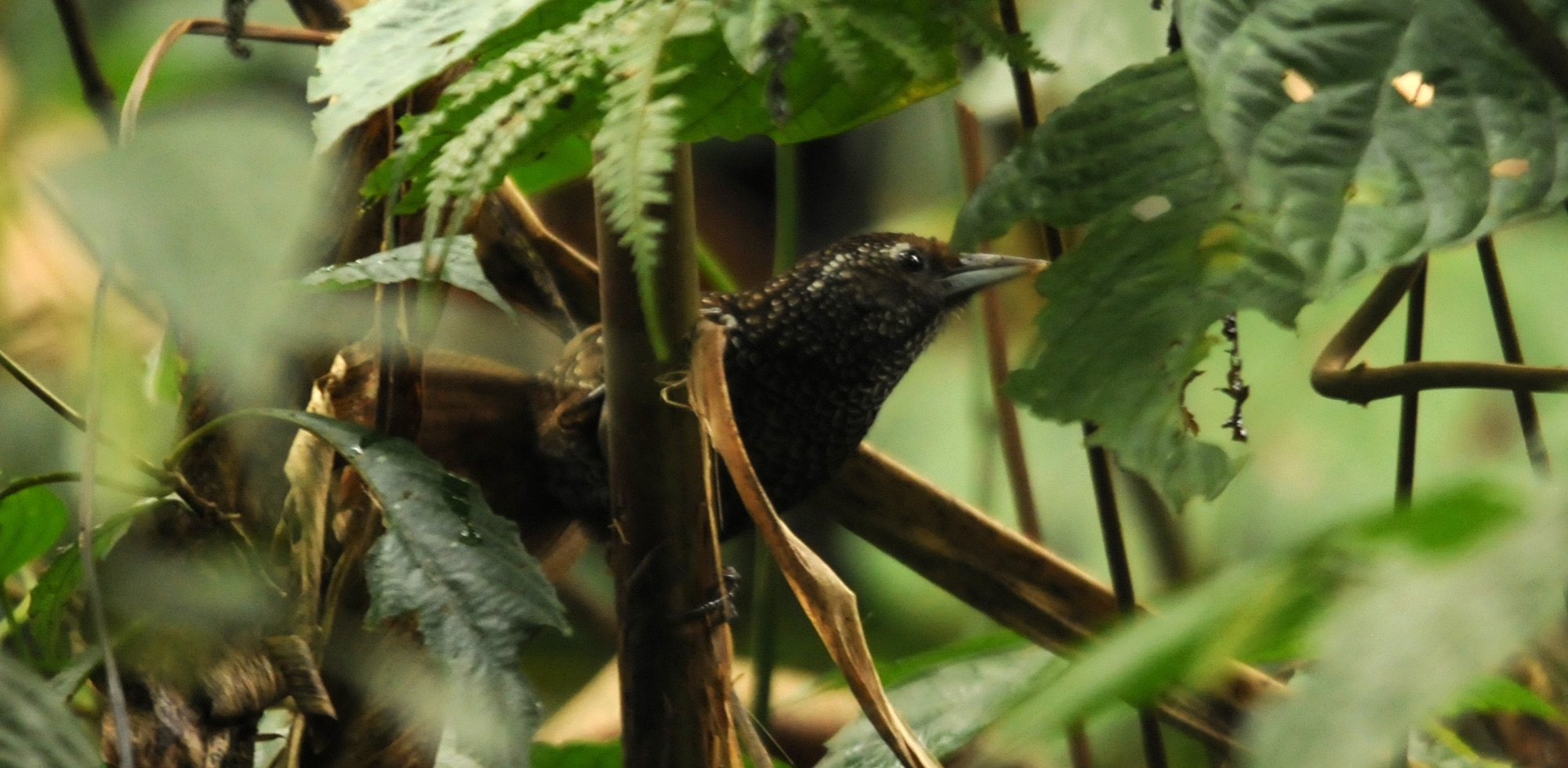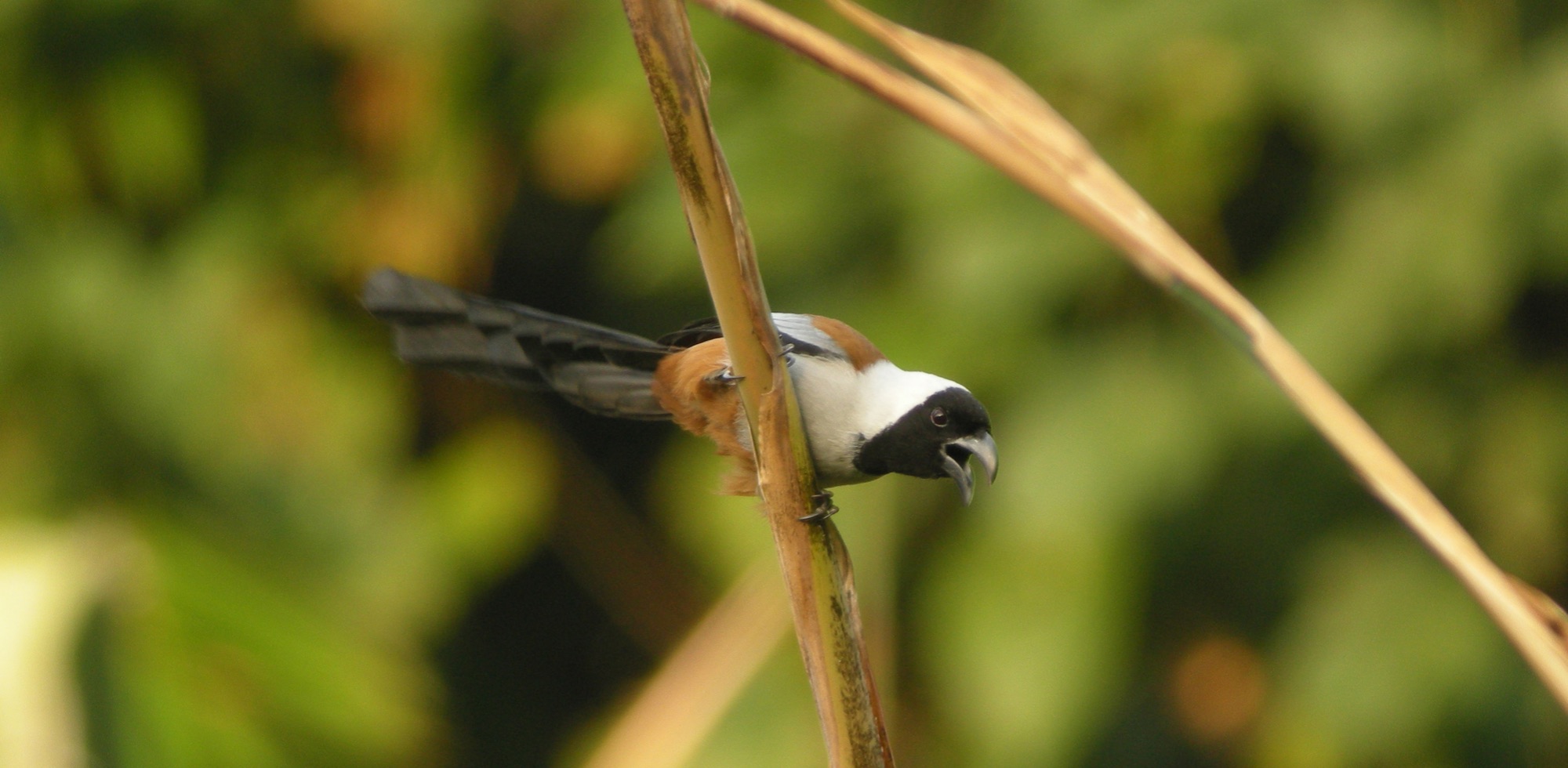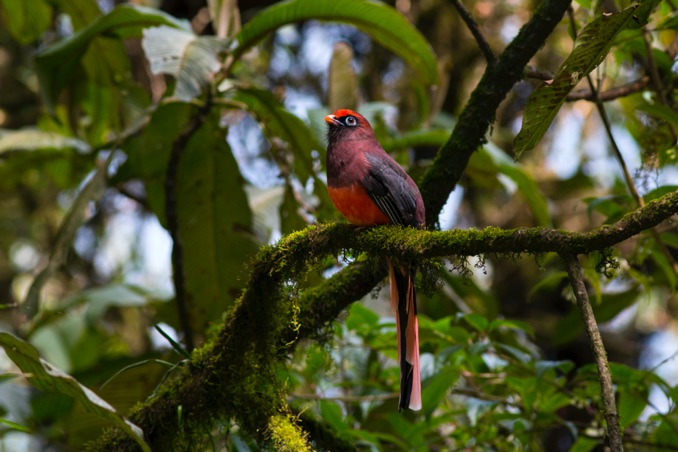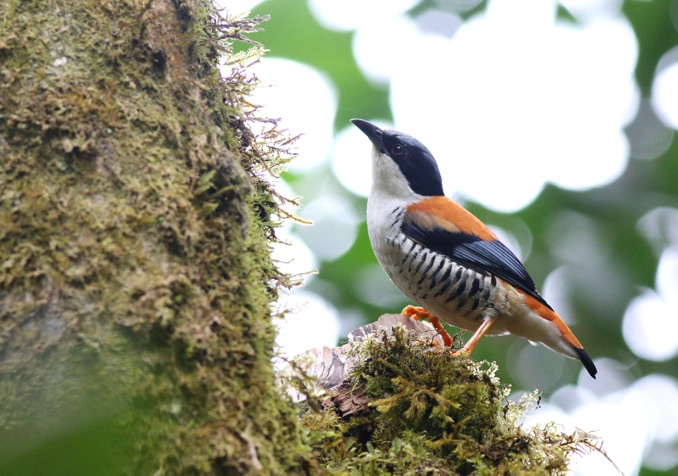NE INDIA: MANIPUR, NAGALAND, MISHMI HILLS & KAZIRANGA TOUR ITINERARY
Day 1 Arrival Imphal Airport, Manipur - 12th January
Our NE India birding adventure begins upon arrival at Imphal Airport in Manipur. We will spend the first night of our tour. at a nearby hotel.
Day 2 Manipur
Today we will be looking for some very special birds that include Spot-breasted Scimitar-Babbler, Spot-breasted, Blue-winged, Striped & Moustached Laughingthrushes, Rusty-capped Fulvetta and a few other surprises too! However, Yellow-throated Laughingthrush is the standout star bird of this area and we will make every endeavour to find one.
Day 3 Imphal - Khonoma, Nagaland
We will have one final morning to search for any new species before setting out on the long drive to Khonoma village, Nagaland.
Day 4 Khonoma, Nagaland
The Indian state of Nagaland is another area that is relatively unexplored although our guide, Peter Lobo, has now made numerous visits and continues to find a number of incredibly rare and localised species on each trip. Nestled within the Japfu Mountains, the delightful Khonoma village will give us access to the Khonoma Nature Conservation and Tragopan Sanctuary. This is a safe haven for wildlife as traditional hunting has been banned since the year 2000 and thus has allowed bird populations to flourish. We will initally focus on the Indian endemic Naga Wren-Babbler, which will involve a relatively steep walk into the hills. The other key species here is the stunningly beautiful Blyth's Tragopan, but there are further chances in the Mishmi Hills. Other birds present in this area include Hodgson's Frogmouth, Dark-rumped Swift, Cachar Wedge-billed Babbler, Spot-breasted, Brown-capped and Assam Laughingthrushes and Grey Sibia amongst others. Moving on to Chizami, this 'recently discovered' hotspot has been productive for several notoriously, very tricky species and we will target the skulking Yellow-throated Laughingthrush if still needed, as well as Black-tailed Crake, Spot-breasted Scimitar-Babbler, Striated Prinia, White-browed Fulvetta (austeni), and there are possibilities of Blue-naped Pitta as well.
Other species present in Nagaland include Mountain Bamboo-Partridge, Mountain Hawk-Eagle, Crested Goshawk, Grey-headed Parakeet, Speckled Woodpigeon, Chestnut-vented Nuthatch, Eye-browed, Black-breasted and Grey-sided Thrushes, Burmese Shrike, Slender-billed Oriole, Long-tailed Broadbill, Hodgson’s Redstart, Red-faced Liochichla, White-browed Laughingthrush, Spot-breasted Parrotbill, Orange-bellied Leafbird, Black Bulbul, Rusty-capped and Nepal Fulvettas, Silver-eared Mesia, Bar-throated Minla, Rusty-fronted Barwing, Crested Finchbill and Yellow-bellied Flowerpecker.
Day 5 Khonoma - Tinsukhia
After some final birding we will drive to Tinsukhia in Assam for an overnight stay.
Day 6 Digboi - Roing, Mushmi Hilla, Arunachal Pradesh
Early this morning we will visit the special lowland forested area of Digboi, where we will search for the extremely localised Chestnut-backed Laughingthrush, as well as Rufous-necked Laughingthrush, and there's a chance of seeing the extremely shy White-winged Duck and.the rare Collared Treepie. It will also be another opportunity to look for Blue-naped Pitta, as well as Blue-throated Flycatcher and Silver-breasted Broadbill. Besides the main target species we may also see Jerdon's Baza, Brown-backed Needletail, Grey-throated or White-hooded Babbler, or Greater Racket-tailed Drongo.
From here it's not too far until we reach the Maguri Grasslands on the Brahmaputra floodplain, where amidst the extensive stands of tall Elephant grass that stretch as far as the eye can see, scarce and local species such as Jerdon’s Babbler, the rare Marsh Babbler and even Blunt-winged Warbler reside. We would need a great deal of luck to locate the endemic Black-breasted Parrotbill but we will try! More widespread species occurring here include Black, Yellow and Cinnamon Bitterns, Watercock, Bronze-winged and Pheasant-tailed Jacanas, Bengal Bushlark, Chestnut-capped Babbler and perhaps Spotted Bush-Warbler amongst others. Somewhere along the river we should have seen the impressive Pallas's Gull, whilst Sand Lark is possible as well. Later in the day, and if we havent seen it already, we can try another grassland area for Bengal Florican. From here we will head to our lodging for the night close to the town of Roing at the base of the fabled Mishmi Hills, which acts as the gateway to Arunachel Pradesh. Night at Roing.
Days 7 - 9 Mishmi Hills
Our base for the next 3 nights will be a conveniently situated Forest Rest House located just a few kilometres below Mayodia Pass (2655m). So this morning we will drive from around 200m up to 2450m and such a diverse range in altitude inevitably means a wide selection of typical Himalayan specialities that include many species found only in Bhutan and Eaglenest to the west. As we have spent most of our time so far at low elevations, we will concentrate our efforts on the upper sections of the Mishmi Hills initially. The main objective of visiting this remote and unexplored area is to find the endemic Mishmi Wren-Babbler, which was only recently rediscovered after an absence of over 60 years! In fact since its initial discovery in 1947 it was not reliably seen until 2004 and needless to say we will spend plenty of time searching for this enigmatic species, which can be relatively common in certain areas. There are several other key species we will concentrate on finding here, namely Blyth's Tragopan, Rufous-necked Hornbill, Ward's Trogon, Beautiful Nuthatch, Cachar Wedge-billed, Bar-winged and Long-billed Wren-Babblers, Black-headed Shrike-Babbler, Himalayan Cutia, Manipur Fulvetta and even the much-wanted Fire-tailed Myzornis can be found around the pass if there's been heavy snowfall higher up in the mountains. Gould's Shortwing is also possible, and at this time of year they are present at lower elevations but we would need a huge slice of luck!
The area around Mayodia Pass is excellent for other higher altitude species such as Himalayan Red-flanked and White-browed Bush-robins, Black-faced and Spotted Laughingthrushes, Fulvous Parrotbill, Rufous-vented and Rufous-fronted Tits, Grey-headed Bullfinch, Dark-rumped and Spot-winged Rosefinches, and both Crimson-browed and Gold-naped Finches. Sclater's Monal is also present above the tree line but access to this area is extremely difficult and requires a very tough hike, although on rare occasions it has been seen on the road. Just below the pass are some good patches of bamboo and scrub which are home to Common Hill-Partridge, Rufous-breasted Bush-Robins, Rusty-fronted and Streak-throated Barwings, Streak-breasted and Slender-billed Scimitar-Babblers, Brown-throated (Ludlow's) Fulvetta, Yellowish-bellied Bush-warbler, Fire-tailed and Mrs Gould's Sunbirds, Yellow-cheeked Tit and Yellow-billed Blue Magpie. We should also encounter many large mixed-species flocks that will certainly get our pulses racing and test our identification skills! This is without doubt one of the most exciting ‘hot-spots' in India, and to be in such a remote area practically guarantees the odd surprise or three!
We will spend all of our time birding the lush primary forested hillsides from the little-used road and the forests here are home to a very interesting cross-selection of other Eastern Himalayan specialities and more widespread birds of the northern subcontinent such as Rufous-throated Hill-Partridge, Chestnut-breasted Partridge (rare), Bay, Darjeeling and Crimson-breasted Woodpeckers, Great and Golden-throated Barbets, Rufous-necked Hornbill, White-gorgeted Flycatcher, Rusty-bellied Shortwing, Purple Cochoa, Sultan Tit, Chestnut, Long-tailed and Himalayan Forest Thrushes, Red-tailed Minla, Black-chinned, White-naped, Striated, Whiskered, Rufous-vented and Stripe-throated Yuhinas, Rufous-winged, Golden-breasted, Rufous-winged and Yellow-throated Fulvettas, Streak-throated Barwing, Striated, White-crested, Grey-sided, Scaly and Blue-winged Laughingthrushes, Coral-billed and Streak-breasted Scimitar-babblers, Spotted Elachura, Grey-winged Blackbird, Golden and Rufous-capped Babblers, Blue-winged and Red-tailed Minlas, Beautiful and Long-tailed Sibias, Ashy-throated and Buff-barred Leaf-warblers, Chestnut-crowned, Broad-billed, Black-faced and Grey-cheeked Warblers, Green-tailed and Black-throated Sunbirds, Eurasian Jay, Brown and Grey-headed Parrotbills, Fire-breasted Flowerpecker, Gold-naped Finch, Dark-breasted Rosefinch and Grey-headed Bullfinch. Nights at Mayodia Rest House.
Day 10 Mishmi Hills - Tinsukhia
What we do today depends on species are still needed, but we may well spend our time at lower elevations searching the roadside forest and bamboo stands for a different range of species. During our previous visits we have found Pale-naped Pigeon, White-browed Piculet, Pale-headed, Bay and Grey-headed Woodpeckers, Red-headed Trogon, Green Cochoa, Slaty-backed and Black-backed Forktails, Red-billed Scimitar-babbler, Silver-eared Mesia, Nepal Fulvetta, Blue-winged Minla, Striated and Black-chinned Yuhinas, Rufous-faced Warbler, Chestnut-headed, Grey-bellied and Slaty-bellied Tesias, Pygmy Wren-babbler, Lesser and Greater Necklaced Laughingthrushes, Indian White-hooded Babbler, White-breasted Parrotbill (formerly Greater Rufous-headed), Pale-billed Parrotbill (formerly Lesser Rufous-headed), Streaked and Little Spiderhunters, Striped Tit-Babbler, Scarlet Finch and Collared Treepie amongst many other delightful species. In the afternoon we will drive back across the new bridge over the mighty Brahmaputra River and our nice hotel where we will spend the night. Night at Tinsukhia.
Day 11 Tinsukhia - Kaziranga
Today is mainly a travel day as we drive to our base for the next couple of nights at Kaziranga. Night at Bon Habi Resort..
Days 12 - 13 Kaziranga National Park
We will have the first of our 4 jeep safaris into the National Park this morning. The reserve lies on the southern banks of the mighty Brahmaputra River where the predominant vegetation is a mixture of tall grasslands and riverine forest interspersed with many marshes, streams and ox-bow lakes, whilst the nearby Mikir Hills rise to over 1,000 metres. This mosaic of habitats and its remote position ensure a haven for wildlife, including some of the most wanted mammals in the Indian Sub-continent. This is one of the few places still left to see Indian One-horned Rhinoceros, and there are also wild Water Buffalo, Indian Elephant and Swamp Deer. Other mammal species we should see include Rhesus Macaque, Common and Capped Langurs, Sambar, Barking Deer, Hog Deer, Wild Boar and Smooth-coated Otter. Tigers are also present but are difficult to see, as are Leopard and Sloth Bear, but their mere presence will have us search the park in open-topped jeeps. We can make regular stops at watch-towers and other vantage points that will provide us with panoramic views across this most picturesque of all India's national parks. The birds here are simply amazing and we are sure to be astonished by the sheer number and variety of water birds present such as Spot-billed Pelican, numerous herons and egrets, Black-necked and Woolly-necked Storks, Lesser Adjutant, Bar-headed Goose, Lesser Whistling-duck, Spot-billed Duck, Ferruginous Pochard and Bronze-winged Jacana, as well as a good variety of waders including Pied Avocet, Pacific Golden Plover, Grey-headed Lapwing, Spotted Redshank and Marsh Sandpiper. Stunning River and Black-bellied Terns patrol the watercourses constantly, whilst Himalayan Griffon and White-rumped Vultures, Pallas's and Grey-headed Fish-eagles, Pied Harrier, Greater Spotted Eagle and Changeable Hawk-eagle are usually conspicuous. The forest, grasslands and surrounding areas are home to Dusky Eagle and Brown Fish-Owls, Kalij Pheasant, Red Junglefowl, Brown-backed Needletail, Blue-naped Pitta, Banded Bay and Drongo Cuckoos, Dollarbird, Blossom-headed Parakeet, Chestnut-headed and Blue-tailed Bee-Eaters, Great and Oriental Pied Hornbills, Streak-throated and Grey-headed Woodpeckers, Himalayan Flameback, Oriental Turtle-Dove, Green-billed Coucal, Streak-throated Swallow, Black-backed Forktail, Ashy Minivet, Small and Rufous-bellied Niltavas, Grey Bushchat, White-crested and Rufous-necked Laughingthrushes, Slender-billed and Abbott's Babblers, Pale-footed Bush-Warbler, Whistler's, Thick-billed, Blyth's Reed and Paddyfield Warblers, Himalayan Rubythroat, White-rumped Shama, Siberian and Himalayan Rubythroats, Brown and Grey-backed Shrikes, Bengal Bushlark, Common Green Magpie, Yellow-breasted Bunting, White-vented Myna and Spot-winged Starling. Other scarce or special birds that can be found include Baer's Pochard, Falcated Duck, Greater Adjutant and Slender-billed Vultures, whilst Bengal Florican breeds amongst the tall grasslands and the localised Terai grassland specialist Swamp Francolin can often be easy to see here. Our previous visits have also turned up a few surprises such as Forest Eagle-owl, Grey-bellied Cuckoo, Crow-billed Drongo and even the rare Finn's Weaver. This will be an incredibly rewarding and ultimately relaxing way in which to finish our incredible NE India adventure! Nights at Bon Habi Resort.
Day 14 Kaziranga - Guwahati Airport - 25th January
We will leave our lodge at Kaziranga in plenty of time to reach Guwahati Airport where the tour concludes later today.
Please note that the mai tour itinerary may well run in reverse accordign to airline schedules.
******************** Info on our pre-tour extension to Mizoram ************************
Day 1 : Arrival into Mizoram - 6th January
From Lengpui airport )Airport code AJL) we will drive to Hmuifang Tourist Resort, some 3 hours away. It's going to be rather basic accommodation here with attached toilets. If time permits we can bird at Sailam which is a 30 minutes drive away.
Day 2: Sailam - Sangau - Phawngpui National Park
We will do some pre-breakfast birding at Sailam before heading for Sangau, our base for Phawngpui National Park. Key targets for this morning include Spot-breasted & Blue-winged Laughingthrushes, Brown-crowned Scimitar-Babbler, Grey Sibia, Red-faced Liocichla and Spot-throated Babbler. Much of the day after breakfast will be spent on the 8 hours drive to Sangau! Overnight at Sangau Tourist Lodge.
Days 3 - 5: Thaltlang - Phawngpui National Park
After an early breakfast we wikll drive to Thaltlang (our base for Phawngpui) and take a 4WD pick-up jeep to drive to the top of Phawngpui National Park - Far Pak. It's going to take around 2-3 hours to reach the summit at Far Pak where we will be looking primarily for Dark-rumped Swift, Spot-breasted Scimitar-Babbler, Assam Laughingthrush, Chin Hills Wren-Babbler and Mount Victoria Babax. A fine supporting cast includes many incredibly rare birds that just stray across the border into India such as Mountain Bamboo-Partridge, Stripe-breasted Woodpecker, Hume's Treecreeper, Striped Laughingthrush, Rufous-crowned Prinia, Spot-breasted Parrotbill, Chestnut-flanked White-eye and Buff-throated Warbler, Overnight at Sangau Tourist Lodge.
Day 6: Phawngpui - Lengpui
We will target some lower elevation species before breakfast such as the rare White-cheeked Partridge, Buff-breasted Babbler, Buff-chested Babbler, Large Scimitar-Babbler, Blyth's Paradise-Flycatcher, Pale-chinned Flycatcher and Yellow-vented Flowerpecker, After breakfast drive back to Lengpui. Ovenight stay at Lengpui Tourist Lodge.
Day 7: Lengpui - Main Tour - 12th January
Early morning Birding around Lengpui Tourist Lodge. After breakfast we will head to the Airport and fly to Manipur and the start of the main tour..
All photos copyright Nick Bray/Zoothera Birding unless otherwise stated
1st row - Mishmi Wren-Babbler by Rofikul Islam, Blue-naped Pitta by Rofikul Islam, Rufous-necked Hornbill by Peter Lobo
2nd row - Blyth's Tragopan by Rofikul Islam
3rd row - Fire-tailed Myzornis by Peter Lobo
4th row - Ward's Trogon by Peter Lobo, Himalayan Cutia by Peter Lobo

